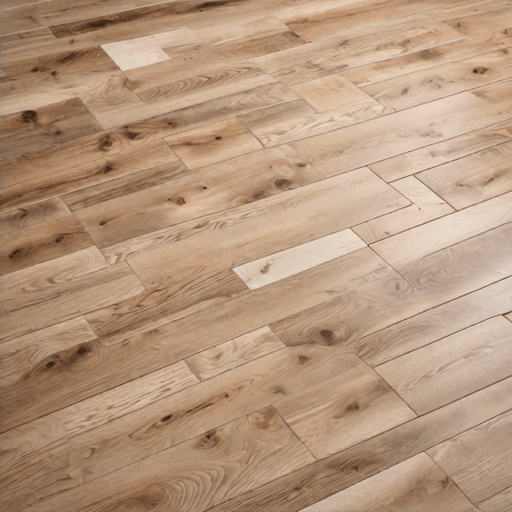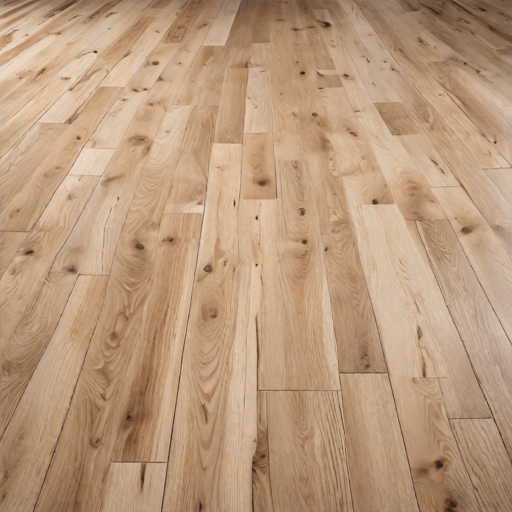Hardwood floor refinishing is the key to bringing back the natural beauty of your worn-out wooden floors. Over time, hardwood floors can become dull, scratched, and damaged due to regular wear and tear. However, with the help of professional refinishing services, you can restore your hardwood floors to their former glory. In this article, we will explore the benefits of hardwood floor refinishing, the refinishing process, and why it is a cost-effective solution compared to replacing your entire flooring. Get ready to transform your living space by giving your hardwood floors a fresh new look.
Hardwood Floor Refinishing

There are several reasons why homeowners choose to refinish their hardwood floors. Firstly, refinishing can help to eliminate scratches, dents, and other imperfections that may have accumulated over the years. Secondly, it allows homeowners to change the color or finish of their floors to match their desired aesthetic. Lastly, refinishing hardwood floors can increase the overall value and appeal of a home.
The process of hardwood floor refinishing typically involves the following steps:
-
- Step 1: Inspection and Preparation: Before beginning the refinishing process, it is important to thoroughly inspect the floors for any repairs that may be needed. This includes filling in gaps, replacing damaged boards, and ensuring the floor is clean and free from debris.
-
- Step 2: Sanding: Sanding is a crucial step in refinishing hardwood floors. It helps to remove the old finish and level out any uneven areas. This can be done using a floor sander or by hiring a professional flooring contractor.
-
- Step 3: Staining (Optional): If desired, homeowners can choose to apply a stain to their hardwood floors to change the color or enhance the natural wood grain. This step should be done after sanding and before applying the final finish.
-
- Step 4: Applying the Finish: The final step in refinishing hardwood floors is applying the finish. This can be done using a brush, roller, or sprayer, depending on the type of finish being used. It is important to apply multiple coats of finish for durability and protection.
-
- Step 5: Drying and Curing: After applying the finish, it is crucial to allow the floors to dry and cure properly. This typically takes several days, and during this time, it is important to avoid walking on the floors or placing any furniture or rugs on them.
Steps to Refinish Hardwood Floors
 Refinishing hardwood floors is a multi-step process that requires careful planning and execution. By following the steps outlined below, homeowners can successfully refinish their hardwood floors and achieve beautiful, long-lasting results.
Refinishing hardwood floors is a multi-step process that requires careful planning and execution. By following the steps outlined below, homeowners can successfully refinish their hardwood floors and achieve beautiful, long-lasting results.
Step 1: Prepare the Area: Before beginning the refinishing process, it is important to remove all furniture, rugs, and other items from the room. This will provide a clear and open space to work in.
Step 2: Clean the Floors: Thoroughly clean the floors to remove any dirt, dust, or debris. This can be done using a broom, vacuum cleaner, or damp mop. Ensure that the floors are completely dry before proceeding to the next step.
Step 3: Sand the Floors: Use a floor sander to sand the entire surface of the hardwood floors. Start with a coarse-grit sandpaper and gradually move to finer grits to achieve a smooth and even finish. Be sure to sand in the direction of the wood grain to avoid any scratches or marks.
Step 4: Remove Dust: After sanding, it is important to remove all dust and debris from the floors. This can be done using a vacuum cleaner or a tack cloth. Ensure that the floors are completely clean and free from any particles before moving on to the next step.
Step 5: Apply Stain (Optional): If desired, apply a wood stain to the floors to change the color or enhance the natural beauty of the wood. Follow the manufacturer’s instructions for proper application and drying time.
Step 6: Apply Finish: Once the stain is dry, apply a protective finish to the hardwood floors. This can be a polyurethane, varnish, or wax finish, depending on personal preference. Apply multiple coats for added durability and protection.
Step 7: Allow for Drying and Curing: Allow the finish to dry and cure according to the manufacturer’s instructions. This typically takes several days, during which time it is important to avoid walking on the floors or placing any furniture or rugs on them.
By following these steps, homeowners can successfully refinish their hardwood floors and enjoy the beauty and durability of their newly restored surfaces.
Choosing the Right Finish for Your Floor
 When it comes to hardwood floor refinishing, choosing the right finish is crucial. The finish not only enhances the appearance of your floor but also protects it from daily wear and tear. There are several options available, including polyurethane, oil-based finishes, and water-based finishes.
When it comes to hardwood floor refinishing, choosing the right finish is crucial. The finish not only enhances the appearance of your floor but also protects it from daily wear and tear. There are several options available, including polyurethane, oil-based finishes, and water-based finishes.
Polyurethane finishes are known for their durability and resistance to scratches and stains. They provide a glossy or satin sheen and are easy to maintain. Oil-based finishes, on the other hand, offer a more traditional look and are ideal for older hardwood floors. They require regular maintenance and may take longer to dry.
Water-based finishes are becoming increasingly popular due to their fast drying time and low odor. They provide a clear finish and are environmentally friendly. However, they may not be as durable as polyurethane or oil-based finishes.
When choosing the right finish for your floor, consider factors such as the type of wood, the level of foot traffic, and your personal preference for appearance and maintenance. It’s also a good idea to consult with a professional to ensure you make the best choice for your hardwood floor refinishing project.
https://www.youtube.com/shorts/1JXhwzPiLZA
Tips for Maintaining Refinished Hardwood Floors
Once you have refinished your hardwood floors, it’s important to properly maintain them to keep them looking their best. Here are some tips to help you maintain your newly refinished floors:
-
- Regular Cleaning: Sweep or vacuum your floors regularly to remove dirt and debris that can scratch the surface. Use a damp mop or hardwood floor cleaner to remove stains or spills.
-
- Protective Measures: Place mats or rugs at entryways to prevent dirt and moisture from being tracked onto the floor. Use felt pads on furniture legs to avoid scratches.
-
- Avoid Excess Moisture: Hardwood floors are susceptible to water damage, so be cautious when cleaning and avoid excessive moisture. Wipe up spills immediately and use a damp mop rather than a wet one.
-
- Avoid Harsh Chemicals: When cleaning your refinished hardwood floors, avoid using harsh chemicals or abrasive cleaners that can damage the finish. Stick to recommended hardwood floor cleaners.
-
- Regular Maintenance: Over time, your refinished hardwood floors may show signs of wear. Consider periodic maintenance such as buffing or recoating to restore their shine and protect the finish.
By following these tips, you can prolong the life of your refinished hardwood floors and keep them looking beautiful for years to come.
FAQ: Hardwood Floor Refinishing
How often should hardwood floors be refinished?
Hardwood floors typically need to be refinished every 7-10 years, depending on the amount of foot traffic and wear they receive.
Can I refinish my hardwood floors myself?
While it is possible to refinish hardwood floors yourself, it is a labor-intensive process that requires specialized equipment and expertise. It is often recommended to hire a professional for the best results.
The Benefits of Hardwood Floor Refinishing
In conclusion, hardwood floor refinishing is a worthwhile investment that can transform the look and feel of your home. By restoring the natural beauty of your hardwood floors, you can add value to your property and create a warm and inviting atmosphere. Whether your floors are worn out, scratched, or faded, refinishing them can bring them back to life and make them look brand new. Additionally, refinishing provides a protective layer that helps to prevent further damage and extends the lifespan of your floors. So, if you want to enhance the aesthetic appeal of your home and enjoy the many benefits of well-maintained hardwood floors, consider hardwood floor refinishing as a valuable option.



Furthermore, it’s essential to approach restaining hardwood floors with proper preparation and care. Ensuring that the wood is clean, sanded, and free from any previous finish will yield the best results. By investing time and effort into this process, homeowners can enjoy the timeless elegance of hardwood floors for years to come. With the right techniques and materials, you can achieve a stunning finish that not only revitalizes your space but also adds value to your home.
In conclusion, restaining hardwood floors is an effective way to rejuvenate the beauty of your wood surfaces while also providing a protective layer that can extend their lifespan. This process not only enhances the aesthetic appeal of your home but also allows for customization, enabling you to choose a shade that complements your existing décor. Whether you’re looking to refresh tired floors or completely transform the look of a room, restaining can be a rewarding DIY project or a professional service worth considering.
Remember to properly prepare your floors, choose the right stain color, and apply the stain evenly to ensure a smooth and uniform finish. With a little time and effort, you can transform your hardwood floors and create a warm and inviting atmosphere in your home. So, roll up your sleeves and get ready to enjoy the beauty of your newly restained hardwood floors!